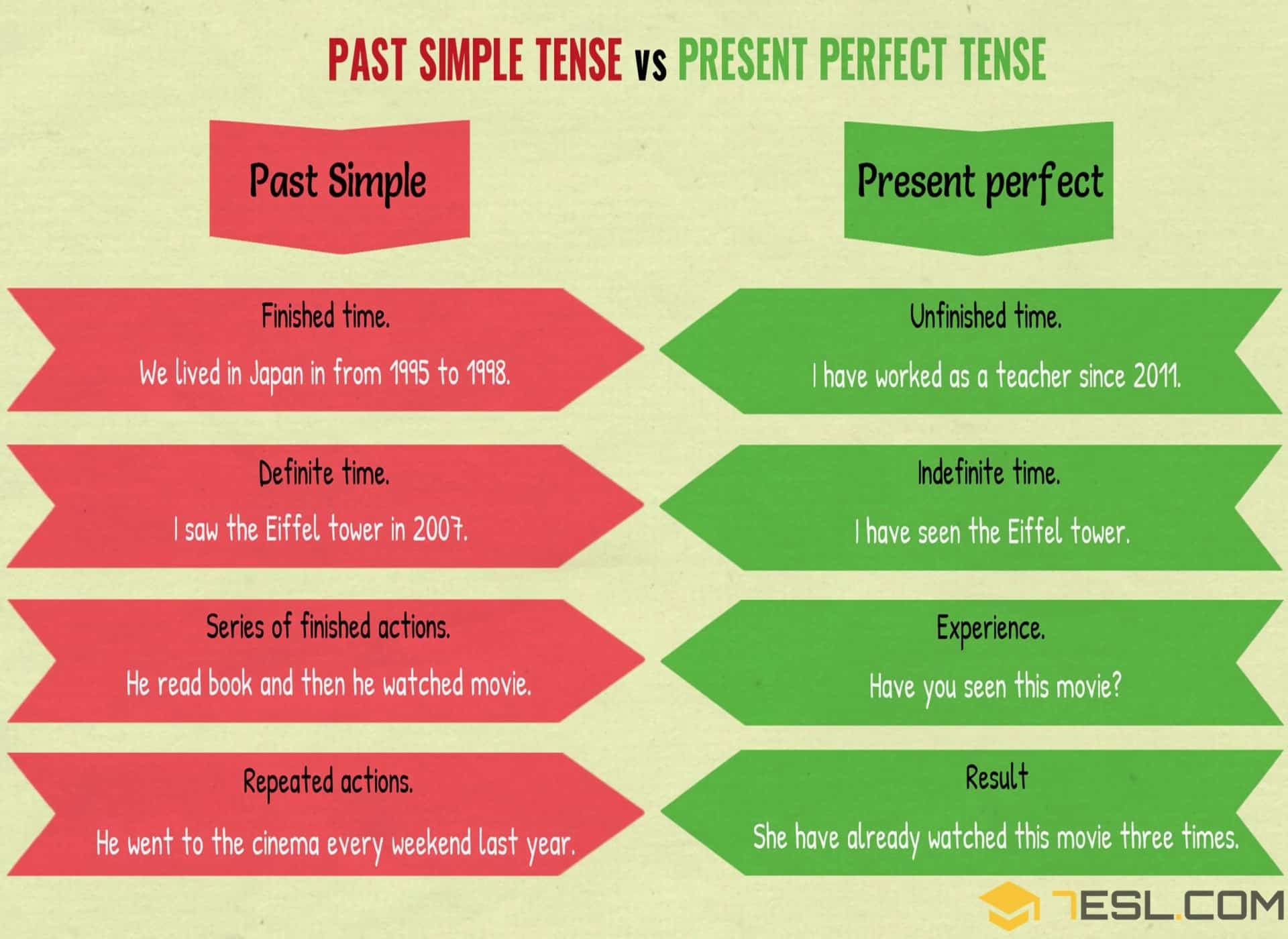When it comes to discussing the past in English, two tenses that are commonly used are the present perfect simple and the past simple. These two tenses may seem similar, but they have distinct differences in terms of when and how they are used. Understanding the differences between the present perfect simple and the past simple can help you communicate more effectively in English.
The present perfect simple is used to talk about actions or events that have a connection to the present. This tense is formed by using the auxiliary verb “have” or “has” followed by the past participle of the main verb. On the other hand, the past simple is used to talk about actions or events that happened at a specific point in the past. This tense is formed by using the past form of the main verb.
Present Perfect Simple vs Past Simple
One key difference between the present perfect simple and the past simple is the time frame in which they are used. The present perfect simple is used to talk about actions or events that have occurred at some point in the past but have a connection to the present. For example, “I have visited Paris before” suggests that the action of visiting Paris has relevance to the present moment.
On the other hand, the past simple is used to talk about actions or events that occurred at a specific time in the past and are now complete. For example, “I visited Paris last year” indicates that the action of visiting Paris took place at a specific point in the past and is no longer relevant to the present moment.
Another difference between the present perfect simple and the past simple is the adverbs that are commonly used with each tense. Adverbs such as “already,” “just,” and “yet” are often used with the present perfect simple to indicate when an action or event happened in relation to the present. In contrast, adverbs such as “yesterday,” “last week,” and “in 1999” are commonly used with the past simple to specify when an action or event took place in the past.
Overall, understanding the differences between the present perfect simple and the past simple can help you communicate more accurately in English. By recognizing when to use each tense and how they are formed, you can effectively convey your ideas about past actions or events. Practice using both tenses in conversation and writing to improve your proficiency in English grammar.
In conclusion, the present perfect simple and the past simple are two important tenses in English that are used to talk about past actions or events. While they may seem similar, they have distinct differences in terms of their usage and formation. By mastering the differences between these two tenses, you can enhance your language skills and communicate more effectively in English.
